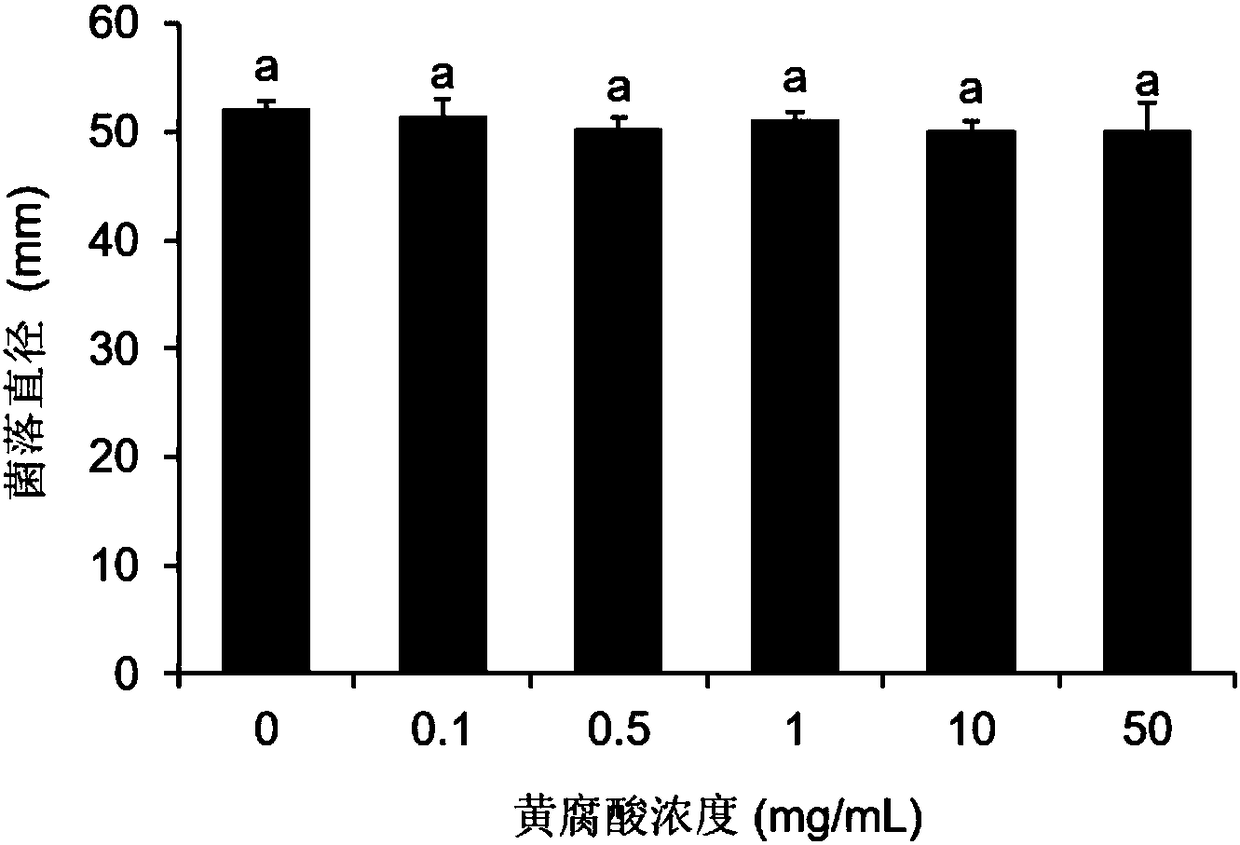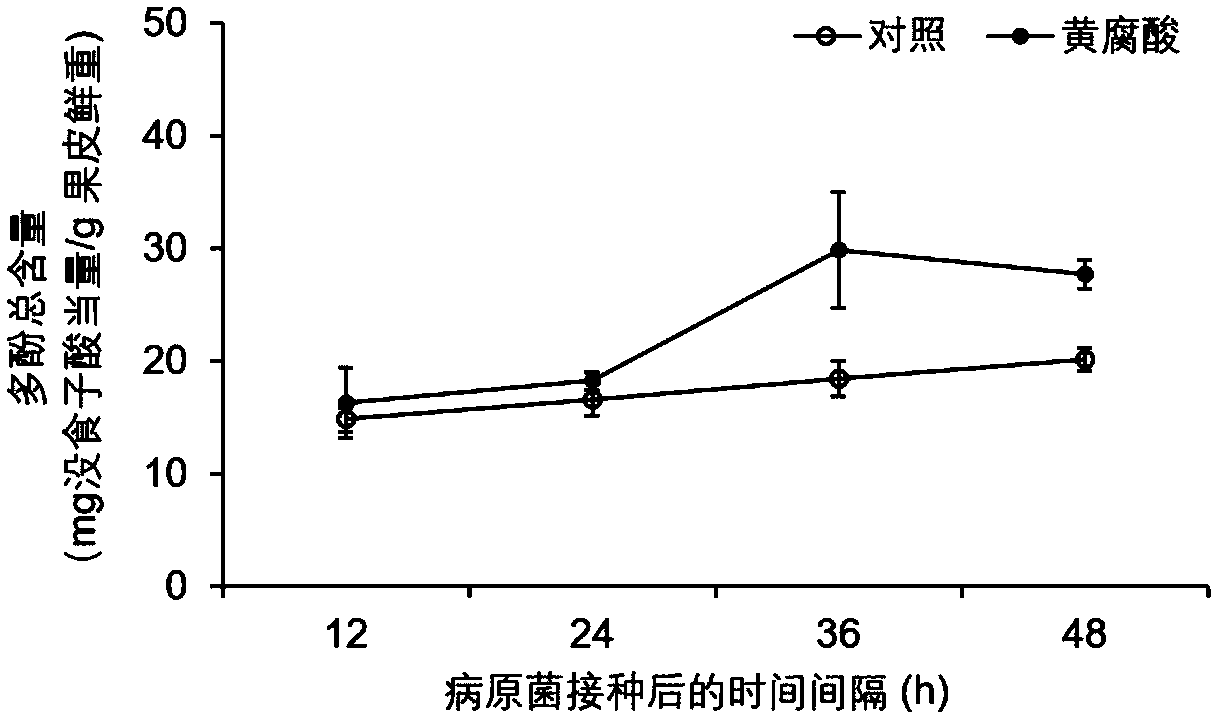Application of fulvic acid in prevention and treatment of postharvest grey mould of grape berries
A technology for fulvic acid and botrytis cinerea, which is applied in the application field of fulvic acid in the prevention and treatment of botrytis cinerea after grape harvest, can solve the problems of restricting the development of grape industry, fruit drop and fruit rot, fruit quality change, etc., and achieves beneficial results. On human health, enhance antibacterial effect, reduce the effect of toxic and side effects
- Summary
- Abstract
- Description
- Claims
- Application Information
AI Technical Summary
Problems solved by technology
Method used
Image
Examples
Embodiment 1
[0022] Embodiment 1, the control effect experiment of fulvic acid to postharvest grape gray mold
[0023] Test materials: the test grape variety "mare milk", purchased from the market.
[0024] The single-grain grape fruit was manually separated, leaving the fruit pedicle, and healthy fruit grains with the same size, shape, and maturity were selected and sterilized in 2% sodium hypochlorite solution for 2 minutes, then rinsed twice with sterile water, dried and grouped.
[0025] (1) Soak the grape fruits in different concentrations of fulvic acid solutions for 10 minutes, set 3 replicates for each concentration, and treat 30 fruits for each replicate.
[0026] (2) After drying the fruits naturally, place all the fruits at 22°C for 24 hours.
[0027] (3) Cultivate Botrytis cinerea on PDA medium for 5 days, then add sterile water to the plate for washing and shaking, and prepare spore suspension (concentration: 3 × 10 4 individual / mL).
[0028] (4) The fruit is artificially s...
Embodiment 2
[0035] Embodiment 2, the influence of fulvic acid on Botrytis cinerea mycelia growth
[0036] Fulvic acid was dissolved in sterile deionized water, and then added to PDA medium to form a medium containing fulvic acid, and the inhibitory effect of different concentrations of fulvic acid on the growth of pathogenic fungi was determined by the mycelial growth rate method. Specific steps are as follows:
[0037] Use sterile deionized water as a solvent to dissolve fulvic acid to form a mother solution, and then accurately add a certain amount of fulvic acid solution to the melted PDA medium at 50°C and mix evenly, so that the final concentrations of fulvic acid in the medium are respectively Reach 0.1, 0.5, 1, 10 and 50mg / mL, each concentration treatment set 3 replicates, with the same volume of sterile deionized water added as a control. After the tested Botrytis cinerea was cultured on the PDA medium for 5 days, use a sterilized puncher to get bacteria cakes (d=6mm) with the sa...
Embodiment 3
[0039] Embodiment 3, the influence of fulvic acid on grape fruit polyphenol content
[0040] Fulvic acid was dissolved in sterile deionized water to a final concentration of 10 mg / mL. Grape fruits were soaked in the fulvic acid solution for 10 minutes and then taken out to dry. Grape fruits were treated with the same volume of deionized water as the experimental control. After placing at 22°C for 24h, inoculate the botrytis cinerea spore suspension with reference to the method of Example 1, then place it under dark conditions at 22°C for cultivation, and regularly sample the grape fruits of each treatment every 12h to prepare for polyphenols Extraction determination of substance content.
[0041] The extraction and determination method of the total polyphenol content in grape peels is as follows: artificially separate the peels from the sampled grape fruit, blot the water with filter paper, quickly freeze the peels in liquid nitrogen and grind the peels to powder, add 8mL of 8...
PUM
| Property | Measurement | Unit |
|---|---|---|
| Mass volume concentration | aaaaa | aaaaa |
Abstract
Description
Claims
Application Information
 Login to View More
Login to View More - R&D
- Intellectual Property
- Life Sciences
- Materials
- Tech Scout
- Unparalleled Data Quality
- Higher Quality Content
- 60% Fewer Hallucinations
Browse by: Latest US Patents, China's latest patents, Technical Efficacy Thesaurus, Application Domain, Technology Topic, Popular Technical Reports.
© 2025 PatSnap. All rights reserved.Legal|Privacy policy|Modern Slavery Act Transparency Statement|Sitemap|About US| Contact US: help@patsnap.com



